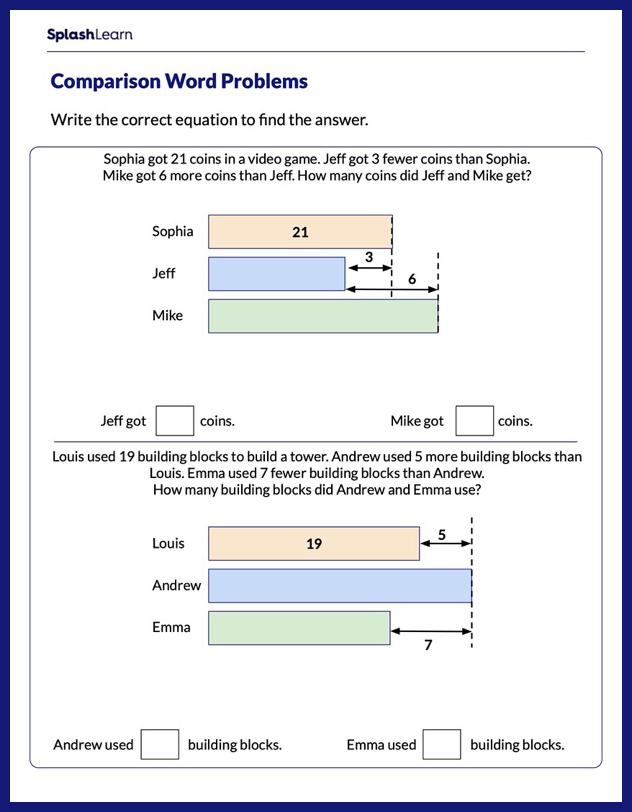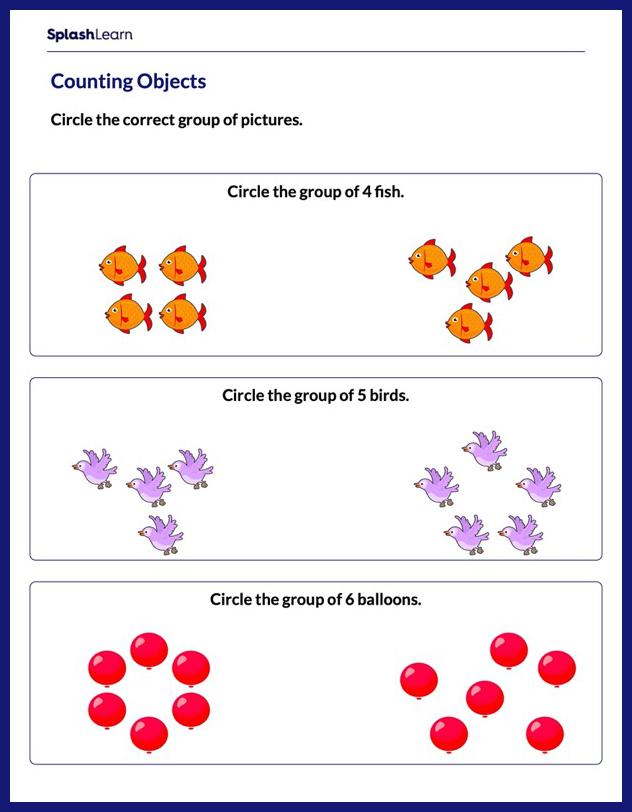What are Equal Parts of a Whole?
We can divide a whole into parts of same or different sizes. When a whole is divided fairly, the parts must be exactly the same size. This means that the parts are equal. If the parts are not the same size, they are called unequal.
Look at the square given below. The square is divided into 2 parts that are equal in size. We can see that the 2 parts combine to form the whole square.

By equal parts definition, we can state: This square has 2 parts which are equal in size and shape. Each equal part is half of the square.
Take a look at the table below. Some of the shapes are divided equally and some have unequal parts. In order to be equal, the parts must be of the same size.

Now, let us understand the concept in detail with the help of some paper-cutting exercises.
How can a square sheet of paper be divided into two parts that are identical?
A square sheet of paper can be split horizontally or vertically. That gives us two halves.
Alternatively, it could be split corner to corner (diagonally) into two identical parts, as shown below.

A square, when equally divided vertically, gives two identical rectangles. But when cut diagonally, it gives two equal triangles. Both are halves of the same square, but of different shapes. Recognize that equal parts of the same wholes can be of different shapes. So, what does equal parts mean? It simply means the whole is divided into parts of equal area.
Related Games

Add Equal Groups Together to Multiply Game

Applications of Skip Counting Game

Apply Skip Counting in Real World Game

Choose the Next Number in the Counting Sequence Game

Click on the Next Number in the Counting Sequence Game

Click the Correct Number after Counting Game

Color Parts to Represent Tenths as Hundredths Game

Color Parts to Show Tenths as Hundredths Game

Color the Parts to Represent the Given Hundredths Game

Color the Parts to Show Decimal Numbers as Fractions Game
Names For Equal Parts of a Whole
Remember that equal parts in math play a major role when we start with fraction. To determine the fraction of a whole, the whole must be divided equally. when a shape is divided into two identical parts, the two parts make up the whole shape, and each part is called half of the whole. When a whole is divided into three parts which are equal in size, then each part is called one-third. The names of each part when a whole is divided equally is listed below:

Fun Facts
1. Equal parts when put together makes the whole.
2. Equal parts must be of the same size or area, but can be different shapes.
Solved Examples
Example 1. Is the shape below divided equally?

Solution: The shape is not fairly divided since the two parts are not equal. So, the given shape is not divided equally.
Example 2. How many equal parts does this whole have?

Solution: The triangle is divided into three parts that are identical. So, the given figure is divided into three parts that are equal.
Example 3. If Eric colored half of the square, how many fourths would he color?

Solution: The square is divided into 4 identical parts or fourths. Each part is one-fourth of the whole square.
If Eric colored half of the square, he would color 2 out of 4 identical parts or 2 parts. Hence, Eric would color two-fourths of the square.
Practice Problems
1What is the name of each part of the whole?

Halves
One-thirds
One-fourths
None of the above
CorrectIncorrect
Correct answer is: One-fourths
The given circle is divided into fourths. So, each part is one-fourth.
2Which of the following shapes are divided into equal parts?
A
B
C
D
CorrectIncorrect
Correct answer is: A
A Square Made of Four Equal Parts

3How many equal parts does the shape shown below have?

2
3
4
CorrectIncorrect
Correct answer is: 0
The shape is divided into 4 unequal parts. Hence, the shape shows 0 parts which are equal.
Frequently Asked Questions
What are unequal parts?
Parts of a whole are said to be unequal when their sizes do not match each other.

In the above image, we see that a circle is divided into 4 parts. However, all the parts are not equal in shape and size.
What is each part of the whole called when it is made of 8 equal parts?
If a shape or whole is made of 8 parts of equal sizes, then each part is called one-eighth.
If each equal part of a whole is called one-fourths, then how many such parts make up the whole?
If each part is one-fourths of the whole, then 4 parts make up the whole.
As someone deeply immersed in the field of mathematics education, with extensive experience in curriculum development and a passion for making mathematical concepts accessible, I bring a wealth of knowledge to the discussion on equal parts of a whole.
Firstly, let's address the core concepts discussed in the article:
-
Equal Parts of a Whole: The article highlights the fundamental notion that when a whole is divided fairly, the resulting parts must be exactly the same size, making them equal. If the parts differ in size, they are termed unequal.
-
Visual Representation: Visual aids, such as a square or a table with various shapes, are employed to illustrate the concept. For instance, a square is divided into two equal parts, emphasizing that each part constitutes half of the square.
-
Paper-Cutting Exercises: The article delves into practical exercises, demonstrating how a square sheet of paper can be divided into identical parts through horizontal, vertical, or diagonal cuts. It underscores that equal parts of the same whole can be of different shapes, as seen in the examples of rectangles and triangles.
-
Naming Equal Parts: The article introduces the concept that equal parts play a crucial role in understanding fractions. Different names are assigned to parts based on the number of equal divisions, such as halves, one-thirds, and one-fourths.
-
Application in Real-world Games: The article extends the understanding of equal parts into real-world applications through games. Skip counting and recognizing the next number in a sequence are showcased as activities reinforcing the concept.
-
Fun Facts: Two intriguing facts are presented – the idea that equal parts, when combined, constitute the whole, and that while equal parts must have the same size or area, they can be of different shapes.
-
Solved Examples: The article includes solved examples to reinforce the learning. It addresses questions about whether a shape is divided equally and the number of equal parts in a given figure.
-
Practice Problems: Practice problems are provided, covering topics like naming parts of a whole and identifying shapes divided into equal parts. Solutions and explanations are given to aid comprehension.
-
Frequently Asked Questions: Common queries are addressed, including the definition of unequal parts and the nomenclature for each part when a whole is divided into eight equal parts.
In conclusion, the article serves as a comprehensive guide to understanding equal parts of a whole, utilizing visual aids, practical exercises, games, and problem-solving to cater to diverse learning styles and reinforce the essential mathematical concepts.









